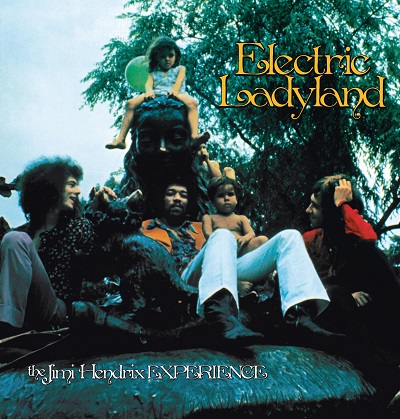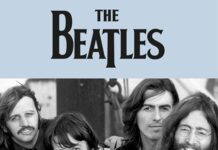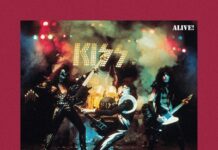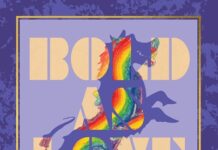It should be obvious by now that 1968 was a banner year for the long player. Van Morrison strolled through the masterful Astral Weeks; the Kinks honed their most organic work on The Kinks Are The Village Green Society; the Zombies pushed their songwriting to its most blissful, thanks to Odyssey and Oracle; Small Faces spewed forth a nonsensical, joyous concept they called Ogden’s Nut Gone Flake; the Rolling Stones got down and dirty on Beggar’s Banquet; and the Beatles released a vast double set, which became known, due to its minimalist packaging, as The White Album. Then there was the Jim Hendrix Experience’s third release, Electric Ladyland.
A landmark in rock and Hendrix’s most realized creation during his lifetime, Electric Ladyland is getting the 50th anniversary red carpet rolled out in fine style with a Deluxe Edition box set available as either a triple-CD, single Blu-ray Disc set or a six-LP, single Blu-ray Disc set, featuring the original double album, newly remastered in stereo, as a 5.1 surround mix by original engineer Eddie Kramer.
The set is rounded out by two additional discs: Electric Ladyland: The Early Takes with demos and outtakes, and Jimi Hendrix Experience: Live At the Hollywood Bowl 9/14/68, which, of course, is yet another example of the guitarist’s skills on his instrument in a live setting. In addition to ripping through their own “Foxey Lady,” “Fire,” “Purple Haze,” and a brand new “Voodoo Child (Slight Return),” Hendrix and the Experience pay tribute to Cream, who had just broken up, with a blazing instrumental cover of “Sunshine Of Your Love.”
Along with the surround mix, the Blu-ray Disc also has the documentary At Last… The Beginning: The Making of Electric Ladyland. Much of the same footage has been used in other Electric Ladyland documentaries, though this one goes a little deeper. Mostly what you see, however, are interviews with Hendrix and his many associates who are no longer alive. The Deluxe Edition boxset is topped off with a full color, 48-page book containing handwritten lyrics, poem and instructions to the record label, plus never-before-published photos from the recording sessions that were shot by Eddie Kramer.
Fifty years ago, Jimi Hendrix was the great anomaly of popular music. Flamboyant… decadent… soulful… and downright intrepid on the guitar, he had a tendency to work up such a fury on his instrument that Mike Bloomfield and Eric Clapton almost cashed in their chips. But it would take a lot more than pyrotechnics and flashy picking to keep the flag flying. Nothing lasts without a good, solid foundation. “Purple Haze” and “Hey Joe” made Hendrix a star in 1966; two years later his genius took root and he became a consummate artist, a shaper and molder of sound, a masterful musician and songwriter. And from the ashes arose the third and final album with the Experience, Electric Ladyland — a sonic masterpiece that almost defies description.
Recorded at the Record Plant in New York City, Hendrix is credited with both directing and producing the double album. In the process, the sessions were marked by moments of innovation, collaboration and separation — the latter due to growing dissension with bassist Noel Redding and the split with Chas Chandler, the man who discovered Jimi Hendrix. Apparently, it was getting a little too crowded in the control booth for the robust ex-Animal bassist. Eddie Kramer, the chief engineer on the record, claims Chandler’s departure merely opened the floodgates. Hendrix started experimenting-layering with effects, overdubbing his parts, orchestrating the arrangements. Other times, he’d settle down on a lengthy instrumental jam and let the tapes roll.
“…And The Gods Made Love” winds up the pitch as the playful “Have You Ever Been (To Electric Ladyland)” invites you in. On “Crosstown Traffic” we get Hendrix on a comb and cellophane tape; on “Voodoo Chile,” we get a monumental blues fest featuring Stevie Winwood on Hammond organ and Jack Casady on bass. Then the record dovetails into the Redding-penned “Little Miss Strange,” one of the bassist’s last recorded exchanges with Hendrix. The pot really starts to boil when a wah wah guitar and harpsichord assume a mystical flair on “Burning Of The Midnight Lamp.” Throw in the angelic kooings of Cissy Houston and the Sweet Inspirations, and you have perhaps one of Hendrix’s most realized compositions. Next, the guitarist teams up with drummer Buddy Miles and organist Mike Finnigan on the R & B, jazzy meddlings of “Rainy Day, Dream Away” and “Still Raining, Still Dreaming.” Hendrix, in his own mirthful style, straddles the two with the sci-fi, 14-minute opus, “1983…(A Merman I Should Turn To Be).”
Hendrix was no stranger to transforming certain classics into his own. He’d done it time and time again, covering everything from “Sgt. Pepper’s Lonely Hearts Club Band” to the show-stopping “Wild Thing” at Monterey. His version of Bob Dylan’s “All Along The Watchtower” became one of his best interpretations — even favored by the author himself. Of course, “Voodoo Child (Slight Return),” the closing track is lauded to this day as one of Hendrix’s greatest achievements. Sleeved in a number of different configurations and formats — the U.K. edition is wrapped in a bevy of naked women; the cover for the 2018 Deluxe Edition is a simple photo taken by Linda McCartney of the band at a park, surrounded by children — Electric Ladyland stands as a pinnacle in the never-ending odyssey of Jimi Hendrix.




















